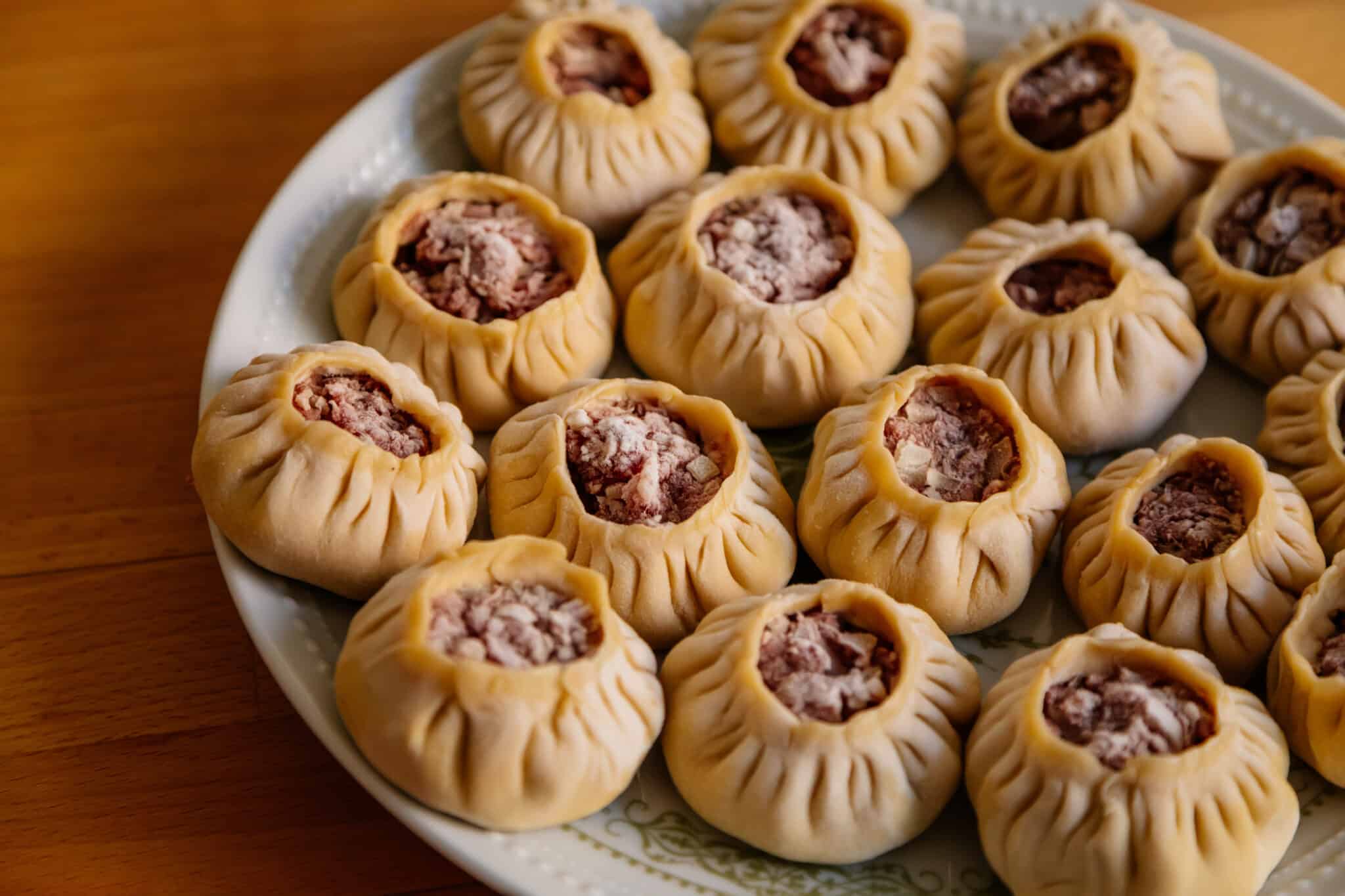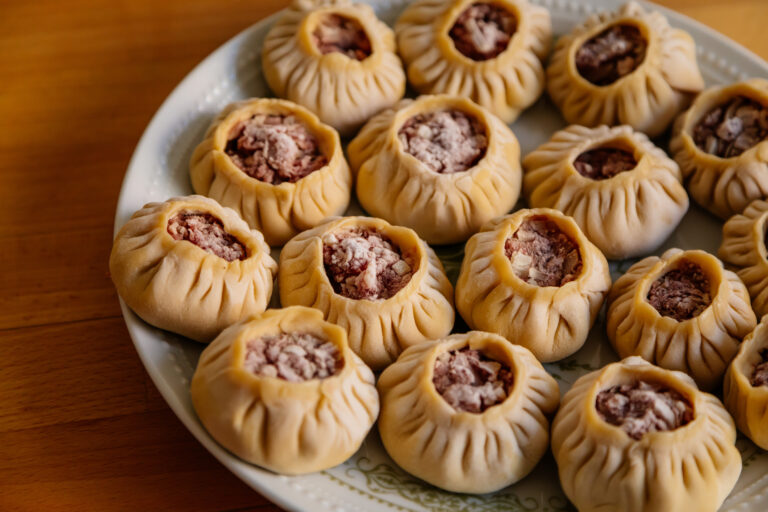
Buuz, the national dish of Mongolia, is a culinary delight that has stood the test of time. This traditional dumpling dish, filled with meat and steamed to perfection, is a staple in Mongolian cuisine.
Our team at Remitly created this guide as part of our series that celebrates the traditional foods of our global customers.
Mongolian Buuz: Origins
The origins of buuz trace back to the nomadic lifestyle of ancient Mongolians and the Buryat people. As they moved across vast landscapes, they needed food that was easy to prepare and carry. Buuz fit this need perfectly. It’s compact, nutritious and can be cooked over an open fire or steamed in a pot.
Over centuries, buuz evolved from a simple sustenance meal into a beloved national dish. Its preparation became an art form passed down through generations. Today, it’s not just food—it’s part of Mongolia’s cultural identity.
Additionally, this dish plays a central role in the celebrations of Tsagaan Sar, the Lunar New Year. During this period, people prepare buuz weeks in advance and leave them outdoors to freeze due to the low temperatures. This way, Mongolians ensure there will be an abundance of buuz for this significant celebration.
Ingredients and Process
People make these dumplings using simple, locally sourced ingredients in Mongolia. They craft the dough from flour and water, with no additional components. The filling usually consists of mutton or beef mixed with onion or garlic for added flavor.
Making buuz involves two primary steps: preparing the dough and crafting the filling. The process involves rolling out the dough into small circles and then filling them with minced meat seasoned with salt and spices.
After filling, each dumpling requires meticulous sealing by folding the edges together in a distinct pattern, a skill that takes practice to master. You then steam the dumplings until they cook completely.
While buuz maintains its core concept—dough filled with meat—there are regional variations across Mongolia that reflect local tastes and traditions. In some areas, people use camel or yak meat instead of mutton or beef. In others, people add various spices to the filling for a unique twist. Despite these variations, the essence of buuz remains unchanged. It’s a dish that unites people.
Recipe for Buuz
You don’t have to travel all the way to Mongolia to try this delicacy. Here’s a simple recipe to get you started.
Ingredients
For the Dough:
– 3 cups of all-purpose flour
– 1 cup of water
For the Filling:
– 500 grams of mutton or beef, minced
– 1 large onion, finely chopped
– Salt and pepper to taste
Instructions
- Start by making the dough. Combine the flour and water in a bowl until it forms a smooth ball. Knead it for about ten minutes, then let it rest for half an hour.
- While the dough is resting, prepare the filling. Mix together the minced meat, chopped onion, salt, and pepper.
- Roll out the dough into small circles—about 10 cm in diameter.
- Place a spoonful of filling in the center of each circle.
- Fold up the edges of each circle to seal in the filling—creating a top knot at one end.
- Steam your buuz over high heat for about 20 minutes, or until fully cooked.
Remember: practice makes perfect when it comes to sealing your dumplings!
Serving and Eating Etiquette
Since buuz is closely associated with Mongolian New Year celebrations, it’s typically served abundantly. It’s common to serve them on large plates, with each person taking as many as they want. They are often accompanied by salad and fried bread.
As for beverages, Suutei Tsai (Mongolian tea) or vodka are usually ideal choices to pair with them.
When eating buuz dumplings, it’s important to hold them by the top knot, where the dough is sealed. This way, you can enjoy the dumpling without its filling spilling out. It’s also a tradition to eat buuz with your hands, a practice that fosters a sense of community around this dish.
Mongolian Cuisine: A Brief Overview
Mongolian cuisine reflects its nomadic history and harsh climate conditions—it’s hearty, meat-heavy, and designed for long winters.
Staple Foods
Meat is central to Mongolian cuisine—with mutton being particularly popular due to Mongolia’s large sheep population. Dairy products from yaks, cows, goats, and camels also play an important role—especially during summer months when they’re abundant.
Mongolia’s limited arable land means that they use grains like wheat and barley sparingly, but these grains do appear in dishes like boortsog, a type of fried bread, and khuushuur, a meat-filled pastry.
Cooking Methods
Steaming and boiling are common cooking methods in Mongolian cuisine. These techniques conserve fuel and help retain the nutritional value of food—a crucial factor given Mongolia’s harsh climate.
Roasting is also used, particularly for special occasions or when cooking large cuts of meat. This method gives dishes a distinctive flavor that’s appreciated by many Mongolians.
Influences from Neighboring Cultures
Mongolian cuisine reflects the influence of its neighbors, particularly China and Russia. Over time, Mongolian dishes have incorporated elements like noodles, dumplings, and various spices.
However, despite these influences, Mongolian cuisine maintains its unique character, reflecting the country’s history, geography, and way of life.
Visit the homepage, download our app, or check out our Help Center to get started.
